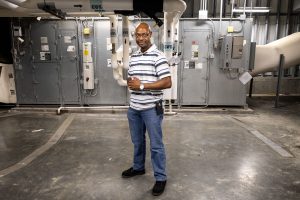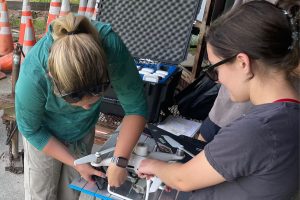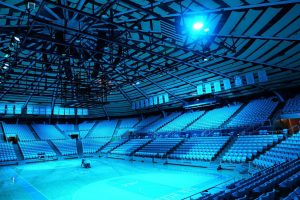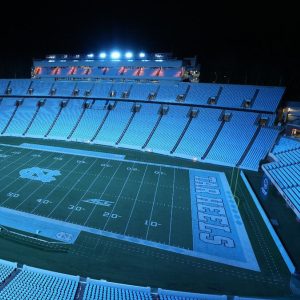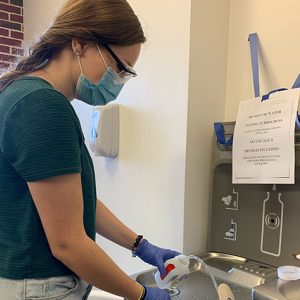University Operations
Connecting Research and Operations
As we work to achieve our climate, water and waste goals, collaboration with operations staff is a priority. As part of our strategic plan we seek to engage with operations teams to make campus more energy efficient and protect our resources, such as water.
Green building practices ensure that buildings are designed and renovated with the University’s climate, water and waste goals in mind. With a large campus with its sights set on carbon neutrality by 2040, the University is constantly looking for ways to improve energy efficiency.
Building Design
When it comes to building design, construction, maintenance and operations, a variety of organizations offer different sustainability-related certifications. At UNC-Chapel Hill, the North Carolina Botanical Garden’s Allen Education Center achieved LEED Platinum in 2010; Mary Ellen Jones achieved LEED Gold certification in 2020.
In addition to these certifications, UNC-Chapel Hill has its own set of green building guidelines. These buildings are also operated and maintained based on sustainability guidelines, which highlight indoor/outdoor recycling infrastructure, energy and water saving, indoor air quality monitoring and green cleaning protocols.
Islands in the Sky: Using Ground and Airborne Methods to Assess Campus Green Roof Plantings
Through a UNC Center for Faculty Excellence (CFE)/Lenovo Instructional Innovation Grant, Carolina Drone Lab (CARDNL) is taking a closer look at the 8 green roofs located on Carolina’s campus. The goals of the project include:
- Shine a light on innovative installations.
- Promote green infrastructure on campus.
- Test drone technology to monitor plant health on green roofs.
Virtual Green Roof Tour
Energy Efficiency
The University must produce a reliable amount of steam to keep its $1.2 billion research enterprise and large teaching hospital functioning. UNC-Chapel Hill cogeneration facility, a combined heat and power system, produces steam. Steam is necessary for heating, humidification and sterilization systems. It’s also needed to create hot water and distilled water.
In addition to producing steam, the facility creates electricity as a byproduct. Only about 15-20% of the University’s annual electricity comes from the cogeneration facility; the rest of our electricity comes from Duke Energy.
In 2019, a burner restoration project further enhanced the efficiency of the facility. The restoration doubled the amount of gas used at the facility, from 25 to 50%. The burner restoration also better prepares the University for the future. The restoration enhanced fuel flexibility, meaning that they can burn solid, liquid and gaseous renewables once available.
Champion Sustainability Fund: Carmichael Arena Upgrades
In fall 2023, two Carolina sports venues received lighting upgrades to enhance the game day experience while also decreasing energy consumption. The projects were made possible through the Champion Sustainability Fund, established by a $1 million gift from Hanesbrands, Inc.
Info & Application
University Operations Highlights


